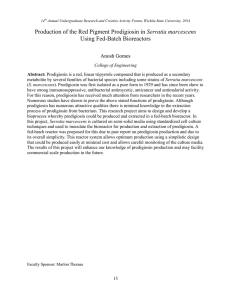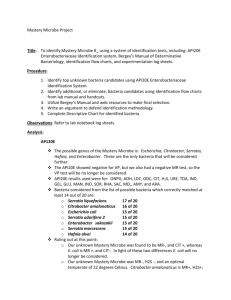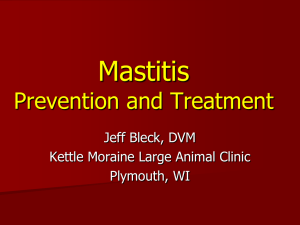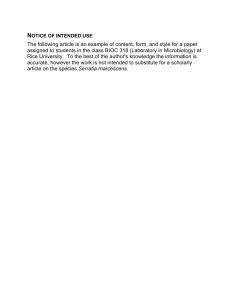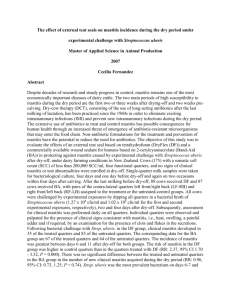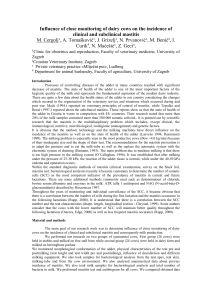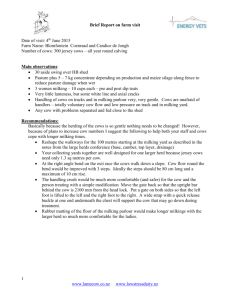Newsletter - San Bernardino County
advertisement
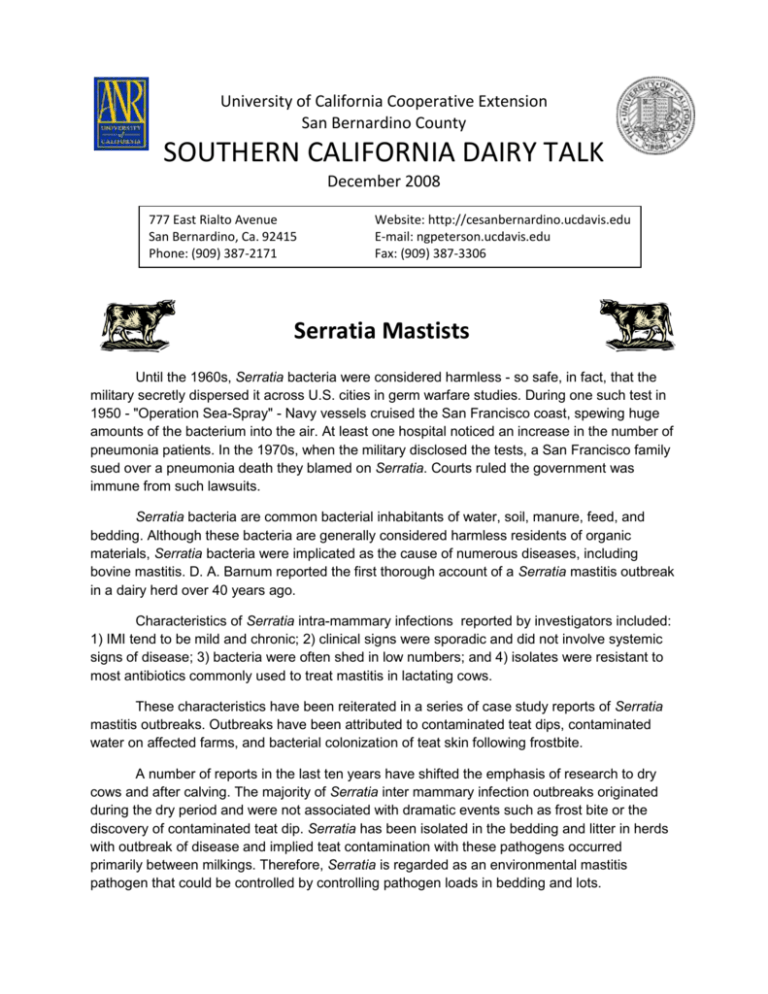
University of California Cooperative Extension San Bernardino County SOUTHERN CALIFORNIA DAIRY TALK December 2008 777 East Rialto Avenue San Bernardino, Ca. 92415 Phone: (909) 387-2171 Website: http://cesanbernardino.ucdavis.edu E-mail: ngpeterson.ucdavis.edu Fax: (909) 387-3306 Serratia Mastists Until the 1960s, Serratia bacteria were considered harmless - so safe, in fact, that the military secretly dispersed it across U.S. cities in germ warfare studies. During one such test in 1950 - "Operation Sea-Spray" - Navy vessels cruised the San Francisco coast, spewing huge amounts of the bacterium into the air. At least one hospital noticed an increase in the number of pneumonia patients. In the 1970s, when the military disclosed the tests, a San Francisco family sued over a pneumonia death they blamed on Serratia. Courts ruled the government was immune from such lawsuits. Serratia bacteria are common bacterial inhabitants of water, soil, manure, feed, and bedding. Although these bacteria are generally considered harmless residents of organic materials, Serratia bacteria were implicated as the cause of numerous diseases, including bovine mastitis. D. A. Barnum reported the first thorough account of a Serratia mastitis outbreak in a dairy herd over 40 years ago. Characteristics of Serratia intra-mammary infections reported by investigators included: 1) IMI tend to be mild and chronic; 2) clinical signs were sporadic and did not involve systemic signs of disease; 3) bacteria were often shed in low numbers; and 4) isolates were resistant to most antibiotics commonly used to treat mastitis in lactating cows. These characteristics have been reiterated in a series of case study reports of Serratia mastitis outbreaks. Outbreaks have been attributed to contaminated teat dips, contaminated water on affected farms, and bacterial colonization of teat skin following frostbite. A number of reports in the last ten years have shifted the emphasis of research to dry cows and after calving. The majority of Serratia inter mammary infection outbreaks originated during the dry period and were not associated with dramatic events such as frost bite or the discovery of contaminated teat dip. Serratia has been isolated in the bedding and litter in herds with outbreak of disease and implied teat contamination with these pathogens occurred primarily between milkings. Therefore, Serratia is regarded as an environmental mastitis pathogen that could be controlled by controlling pathogen loads in bedding and lots. Research has shown the following about Serratia infections: The incidence of new infection is greatest in summer and 62% of cases originate during the dry period. Eighty percent of those infections detected by 30 days into the dry period are still present at calving. More than half of infections became clinical. Average duration of infection was 131 days. Response to antibiotic treatment has been poor. Dry cow therapy eliminated only 7% of infections, Lactation treatment eliminated 11%; 37% were cured spontaneously without treatment, Culling eliminated another 17%, and 28% remained in the herd. Serratia bacteria are classified as gram-negative which means that they probably are not contagious and are not spread during the milking process. Some experts advise the following: 1) Use as little water as possible to prep cows before milking 2) Pre-dip cows as part of the prep procedure 3) Pre-dip but do not wash cows prior to dry cow or lactation treatment 4) Cows and heifers should calve outside whenever possible, 5) Teat dippers should be emptied after every milking and washed in hot, soapy water 6) Wet, soiled bedding should be raked from the back third of free stalls every day ___________________ Nyles G. Peterson Dairy Advisor
